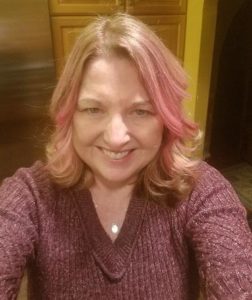If you’re a copywriter looking to speed your way to the top…or increase your earnings, decrease your client “headaches”, and live the lifestyle you want…then you’re not going to want to miss this second set of tips from the “Good Advice Gal” herself.
(If you missed the first set in my email I sent yesterday, you’ll find it here.)
This is all the same advice I doled out the other day while leading a roundtable and hanging in cocktail party “AirMeet” rooms at Justin Goff’s and Stefan Georgi’s Copy Accelerator virtual event the other day.
And it’s advice I doled out in response to many of the same “pain points” I hear about from copywriters again and again (and that I’ve experienced myself).
One copywriter I talked with the other night was telling me how he loves drumming. He loves it so much that he wants to work less and have his own offer so he’s more in control of his life…and has more time for things he enjoys, like drumming.

He shared that he spends time playing drums first thing every morning so that he starts off his day doing something he loves. Then he writes copy the rest of the day.
I really love the idea of doing YOUR stuff, the things that turn you on, or even if it’s self-care like getting that workout in or meditating, DONE first thing.
It’s giving yourself priority before everything else. And it stirs up your creative juices so they’re ready to flow.
But here’s what this copywriter was grappling with: what if he cut back on his client work and launched his own offer…and it failed?
“Fear of failure” is a logical fear when it comes to starting your own business. But if you have a great idea, you’ve got the chops, and heck, you’re YOUNG (like this guy), why not take the leap?
I told him something I’ve heard many times from one of my mentors, Brian Kurtz: “You either get a winner or an education” when you try new things or take risks.
So the worst thing that would happen is he’d “spend” money on a far more valuable business education than I probably got with all the money I spent on an MBA.
He’d either have it be successful or something he could eventually make successful, or he’d learn valuable lessons he could apply to making his next try a big success.
That’s how I “bombed” my way to success. After having a few of my first long-form promos fail to beat the control, I was able to turn them into some of my biggest winners on the second try.
In any case, I think this guy’s got the right ideas about how to structure his day…and how to prioritize things in life.
One other bit of advice I shared was for him to see if one of his current clients might be a good part-time retainer candidate.
That way he’d have steady income coming in to cover his basic bills, and wouldn’t have to spend time courting and bringing in new clients all the time…and could spend that time launching his new offer (or drumming!)
Another Copy Accelerator attendee I spoke with in my roundtable told me he was looking to leave his full-time job to go freelance. He was already “moonlighting” (does anyone use that term anymore?) with some copy gigs on the side.
I gave the same advice to him: see if one of these gigs could be turned into a part-time retainer, with enough income stability so he can leave his job and then start bringing on other clients.
It’s what I did when I left Phillips Publishing. I lined up a six-month retainer that took just half my time and guaranteed me 90% of my income…and then took on clients from there. I ended up making 50% more than my previous 6-figure job the first year.
(Side note: If you’re working a full-time job with benefits, you’ll want to figure out your hourly rate based on your current salary, then increase that by 50%…and that’s the minimum you should be charging clients for your time in a retainer deal. Check out the going rates, too…but many 1099-ers and freelancers don’t take into account the value of their health insurance, employer’s portion of Social Security/Medicare, paid vacation and sick leave, and other benefits you don’t get if you’re self-employed.)
Another thing–whenever I’ve done a retainer, I make sure I get paid by the 1st of the month for the coming month…not at the end of the month after I’ve done the work. Cash up front, baby, just like that scene in “Good Will Hunting”…
Well…maybe not EXACTLY like that movie scene…but you get the idea!
This leads me to another pain point I heard voiced the other night in one of the cocktail party rooms. One female copywriter said, “I feel like I’m always saying ‘yes’ to things, and too eager to please.” I’m sure many guys can relate to this, too.
Many times in the excitement of earning freelance income for the first time and closing new clients, you may overstretch yourself by saying “yes” to too many projects. Then you find yourself working waaaaaay more hours than you want, feeling constantly stressed, and worrying about the quality of your work.
And you should worry, because if you take on too much work at once, you usually won’t be able to do as good of a job for your clients…and you may end up burning bridges. It’s much better to take on a manageable load and then be able to do your best possible work…which will lead to more work from that client, maybe even referrals to other clients, and some “wins” that will open even more doors for you.
Here’s something else: when you start saying “no” to things like a last-minute rush project or if you can squeeze something in…and offer up a later slot instead that fits within a more reasonable schedule, those clients respect you more.
They think, “wow, this person is pretty booked up…they must be GOOD”…and suddenly the power balance falls more into your hands, not theirs. Plus you may be able to negotiate higher fees…and know you’ll be able to do a better job without sacrificing your sanity, which will pay off in the long run.
So don’t be afraid to push back, stand up for yourself, and be a bit of a badass…clients will respect you more for it.
On another note, someone asked how I decide which copywriting projects to take on (when I do take projects on–I’ve cut back quite a bit to focus on mentoring and my own training programs).
Since I generally only work on long-form copy projects with royalty potential, I will screen projects by asking things like how much sales revenue the current control sales page is generating…or how many pieces they’re mailing their current magalog control each month or year.
With long-time clients, I don’t need to do this level of screening, I consider them the “cash cows” of my copywriting project “portfolio”.
It’s like an investment portfolio…you want to have your clients you know will generate a certain amount of income, or there’s an expected level of reward vs. risk.
Then you might do a launch or something that’s outside your “usual” or not as proven, just like you might throw a little gold or crypto or Game Stop into your investment mix. Sometimes these “wild cards” pay off big, and sometimes they don’t.
Just like deals you may enter into like revenue share or royalty-only deals, go in with your eyes wide open that these are more speculative “plays” with risks involved.
The other day I also talked with copywriters who had a solid stable of clients, or were working full-time on retainer or were otherwise “fat and happy” with primarily one client. So I shared a few tips for them as well.
First off, as Dan Kennedy always says, the most dangerous number in business is ONE. When you put all your eggs in one basket, and something happens to that basket (it always does), you may find yourself “scrambling” to line up work fast.
That’s why, no matter what your situation or how good you have it right now, you want to Always. Be. Prospecting.
Last Saturday I had my hair cut and colored by Robin, who has her own “solo” salon in a complex of solo salons where I live outside Washington, DC. She’s told me before about Mitch, a stylist who works out of a solo salon down the hall from her–when he’s not flying out to LA to do J. Lo’s or Kim Kardashian’s hair…or taking the train to New York for Vogue modeling shoots.
I asked Robin if Mitch was taking on new clients (since my daughter was curious), and I assumed the answer would be “no” based on his star-studded clientele.
But Robin told me of course he was…they all learned in hair school that you always put one day aside a week for new client appointments. That’s because no matter how high up you are, there is always turnover. You want to be prepared and always have “wait list” of clients on reserve.
So consider putting one day aside a week (or a similar amount) for new client development…and keep adding to that potential “wait list” (a.k.a. “back-up plan”).
One other bit of advice I dished out at the roundtable the other day: If you’re thinking of coloring your hair, just do it. Just over a year ago, I was riding with my daughter on an airport bus after arriving at LAX and saw a woman about my age with long, layered hair with pink highlights all over it…and I thought it looked great.
So this past Saturday, I finally got the nerve to go for it and DO the pink highlights…

That’s why my advice to Alec Rosa (who was at my roundtable and is now a Copy Insider) is to just DO it…blondes have more fun!
Yours for smarter marketing,
Kim
a.k.a. “Pinky” Schwalm
P.S. I’ll be back at you tomorrow with the first part of an interview with two up-and-coming email copywriting rock stars (one is one of my past mentees). You’re not going to want to miss it!